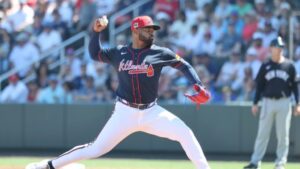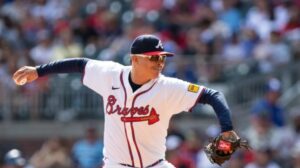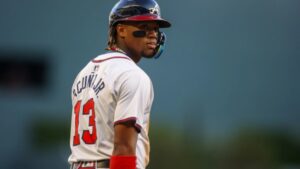
From Jeffrey Springs to Pete Fairbanks, the Tampa Bay Rays have built a reputation for transforming relatively unknown pitchers into major league talents. This knack for unlocking hidden potential has earned the Rays widespread recognition in the baseball world. However, their approach took a different turn last year when they acquired established pitcher Aaron Civale.
Civale joined Tampa Bay during the previous year’s trade deadline, and his acquisition came at a significant cost. The Rays traded away one of their top prospects, Kyle Manzardo, to secure Civale. Manzardo, a promising first baseman, was ranked as the 37th-best prospect in baseball by MLB Pipeline at the time of the trade.
Unlike previous acquisitions where the Rays targeted players with untapped potential, Civale arrived in Tampa with a solid track record. At the time of the trade, Civale was enjoying a career year, posting a 2.34 ERA in 13 starts with a career-low BABIP of .243. Despite his success, Civale’s strikeout rate was relatively modest at 19.0%.
Upon joining the Rays, Civale encountered difficulties in the final months of the season. His curveball and sinker, previously his go-to pitches, were both ineffective during a particular stretch. Opposing hitters capitalized on these pitches, slugging .533 off his curve in August and .880 against his cutter in September.
Despite these struggles, Civale saw a significant uptick in his strikeout rate, accumulating 58 strikeouts in 45.1 innings with Tampa. While allowing a high number of runs is concerning, the increased strikeout rate indicates potential for improvement.
Fast forward to 2024, with Tyler Glasnow gone and several key pitchers sidelined due to injury, Civale has emerged as one of the most reliable starters for the Rays. Despite Zach Eflin’s inconsistent performance early in the season, Civale has been consistent.
One notable adjustment Civale has made is incorporating a sweeper into his pitch repertoire, a slower pitch with more break than his previous slider. Civale’s approach varies depending on the batter’s handedness. Against left-handed hitters, he relies on his curveball and cutter, consistent with his career norms.
However, when facing right-handed hitters, Civale utilizes his sinker and sweeper more frequently, accounting for a combined 55.25% of his pitches (31.1% sinker and 24.1% sweeper).
It would be unreasonable to expect Civale to maintain a sub-1.00 WHIP, as he has demonstrated in his four starts this year. However, Civale has made adjustments to his approach and has seen an increased strikeout rate since joining the Rays.
With a track record of success in previous organizations, Civale emerges as a pitcher to keep an eye on, particularly as a formidable opponent for the Yankees in 2024 and beyond. Additionally, the Rays have control over Civale through next season, adding to his value.

/cdn.vox-cdn.com/uploads/chorus_image/image/73293943/2148908444.0.jpg)





